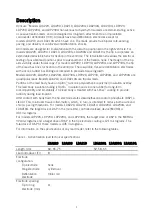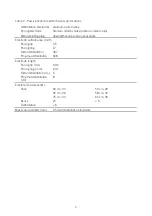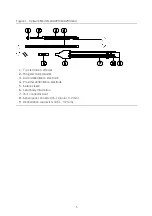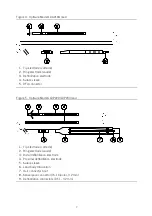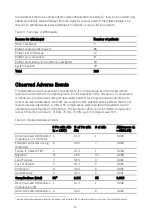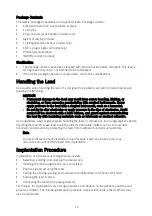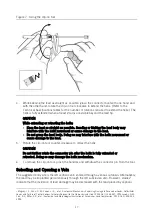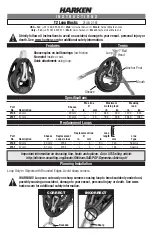
11
Table 4. Observed Adverse Events
# Pts with AEs
(n = 1697)
% of Pts with
AEs
# of AEs
AE/pt-years (n
= 3624.92)
Impedance >= 100
Ω
Elevated pacing thresholds
9
0.5%
9
0.002
High DFTs
1
0.1%
1
0.000
Lead bent at implant
1
0.1%
1
0.000
Migration
3
0.2%
3
0.001
Loss of Capture
3
0.2%
3
0.001
Oversensing
4
0.2%
4
0.001
Undersensing
2
0.1%
2
0.001
Observations (total)
29
1.5%
30
0.008
Potential Adverse Events
Possible adverse events associated with the use of transvenous lead systems include, but are not
limited to, those summarized in the following table.
Refer to the appropriate pulse generator manual for additional complications and precautions
specific to the pulse generator.
Table 5. Potential Adverse Events
Event
Possible Effects
Dislodgement, breaching of the lead
insulation, connector fracture, poor
connection to the pulse generator,
electrode fracture, or conductor
discontinuity.
Intermittent or continuous loss of sensing, possibly
resulting in nondetection of arrhythmia; oversensing of
artifact, possibly causing inappropriate delivery of
therapy from the pulse generator; intermittent or
continuous loss of defibrillation, cardioversion, or
pacing therapy; possible muscle or nerve stimulation
in the pocket area; intermittent or continuous loss of
cardioversion/defibrillation therapy, sensing, or pacing
therapies.
Cardiac perforation
Intermittent or continuous loss of sensing, cardiac
tamponade, hemorrhage, pneumothorax, or loss of
contractility
Venous perforation
Acute hemorrhage (may not be readily apparent),
hemothorax, pneumothorax, or cardiac tamponade
Myocardial irritability
Premature ventricular contractions, supraventricular
and ventricular tachyarrhythmias, postoperative heart
failure
Transvenous implantation procedure
Air embolism
Chronic (> 3 months) implantation
Venous thrombosis and/or obstruction, tissue necrosis,
6
The total number of patients with complications is the total number of patients who experienced at least one complication listed
above. The same applies for the total number of patients with observations.



